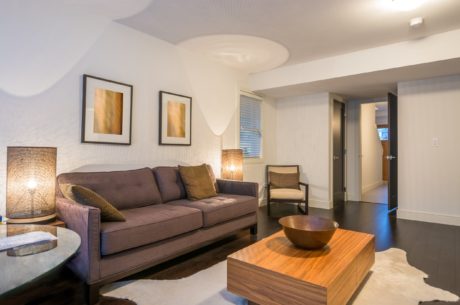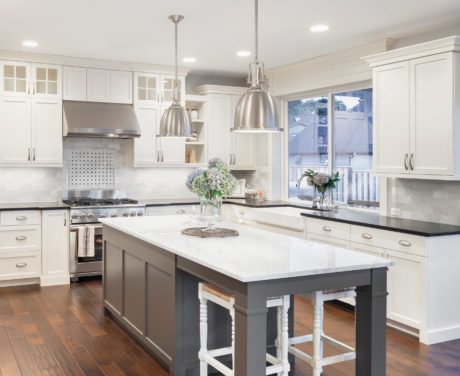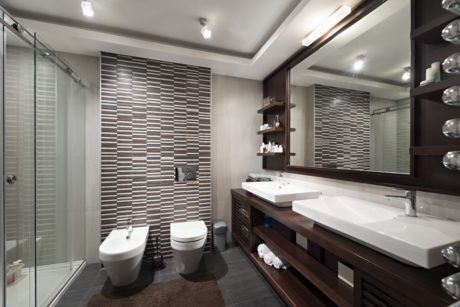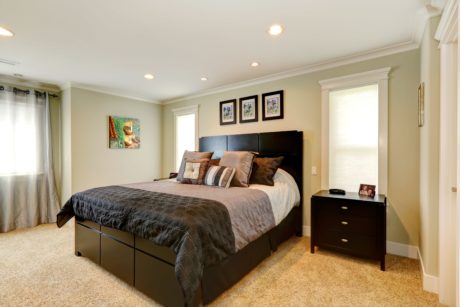The Importance Of Location: A Room-By-Room Lighting Guide
Written by Devin Lewis
When planning out the lighting for each of your rooms, there are three types of layers: ambient lighting as the main light source, task lighting to provide full light in small and specific parts of the room, and accent lighting that are more for decoration or enhancement. With those in mind, here’s a quick guide on where to place your lighting in the main rooms of your home.
Main Room

Your living room will be the main social area of your home, and used for watching TV, reading a book, working on a computer, playing board or video games, and so on. For lighting, you should keep all of that in mind.
- Ambient lighting — overhead lighting controlled by a dimmer lets you set the mood of the room for multiple uses
- Task lighting — place lamps on either side of your couch, chairs, computer desk, or anywhere you would need to read
- Accent lighting — place smaller lights aimed at plants, pieces of art, or beautiful furniture
If you are renting an open concept apartment, you might find that your living room shares the same space as your dining room/eating area in one big Main Room. The same principles will apply, just make sure you place your overhead light and lamps over the living room area.
Kitchen

For your kitchen more than any other room, you’re going to want to be able to see what you’re doing. The last thing you want is an improperly lit kitchen while using sharp knives, so you’ll want lighting that is both placed properly and plentiful.
- Ambient lighting — recessed overhead lights can provide full coverage to your whole counter area
- Task lighting — Add a flush overhead light controlled by a dimmer above your kitchen table if you have one
- Accent lighting — add some accent lights around windows or any design fixtures if you have them
Your kitchen will likely be very light on anything but ambient lighting, both because they are usually very large rooms and because it will already be so brightly and thoroughly lit.
Bathroom

Bathrooms are often the smallest room in your home, but also has specific segments needed for different types of tasks such as shaving, doing make up, taking a shower, and accessing your medicine cabinet.
- Ambient lighting — not as important for bathrooms but maybe have one overhead light for general use
- Task lighting — sconce lights beside the mirror and aimed at you so you can see yourself clearly and maybe a small recessed light above the shower
- Accent lighting — use accents lights if you have a bit of decoration in your bathroom or a nicely tiled shower
How much you do with your bathroom lighting really depends on how big it is. Some people expand their bathrooms to create beautiful, luxurious places to relax in a hot bath. Others have no more than the requisite sink, toilet, and walk in shower.
Bedroom

Bedrooms can be one of the larger rooms in your home as well as being multi-purpose. You might have a TV or computer desk there to save space elsewhere, or you might keep it empty of anything but a place to sleep and get dressed.
- Ambient lighting — a ceiling fan with lights away from the bed so you don’t look up at them, using soft light bulbs and with a dimmer to set the mood you want
- Task lighting — lamps on the bedside tables for reading, recessed lights in the closet, wall sconce by a dresser or makeup desk
- Accent lighting — use sparingly since you do not want to have your bedroom overly lit
Remember, how you use your bedroom will determine what kind of lighting you need. You’ll have some natural light from a window or two to work with, so during the day you likely won’t have any lights on at all. You might find you only need one simple ambient light and then smaller task lighting for reading and finding clothes in your closet.
Find the perfect lighting for every room in your home by shopping Clayton Gray Home.


Leave a Reply